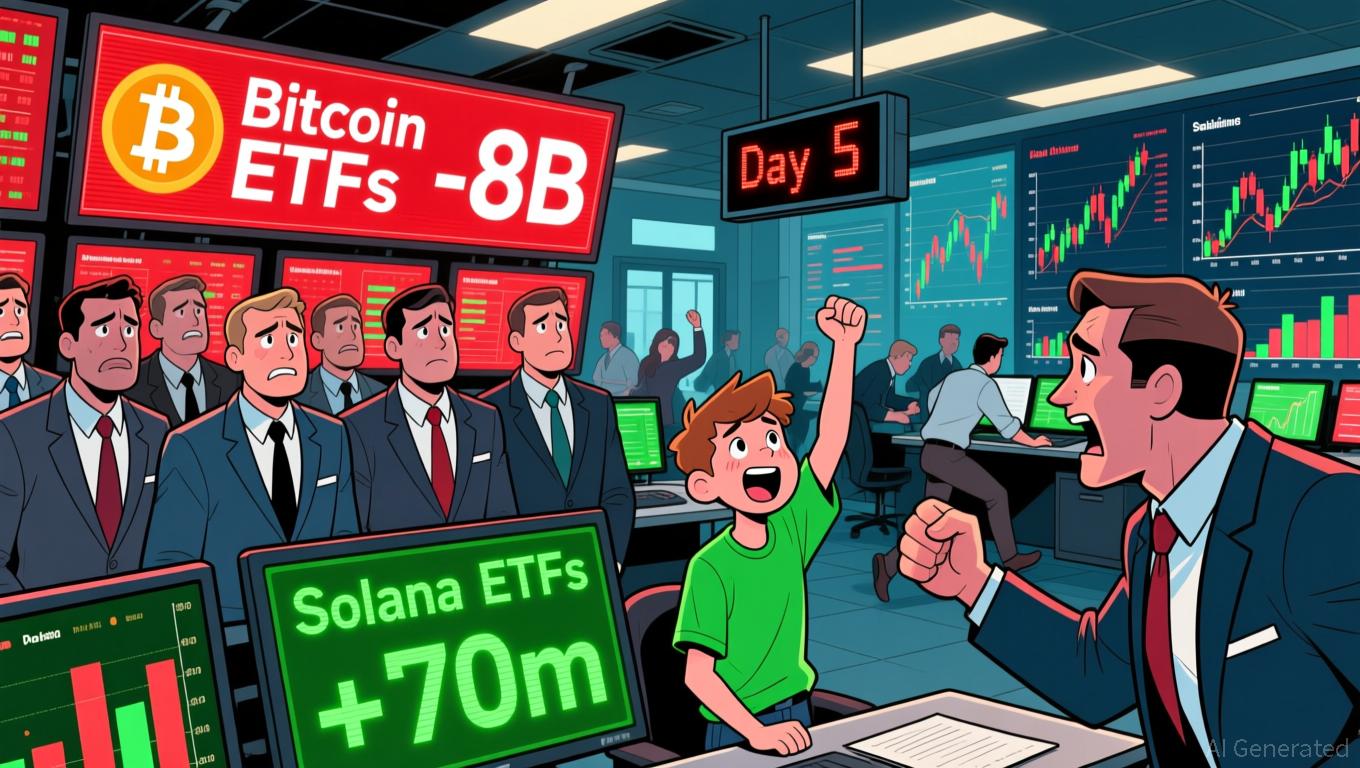In the United States,
Bitcoin
spot ETFs have experienced a prolonged phase of net outflows, with investors withdrawing $137 million on November 6, marking the sixth straight day of redemptions, based on
Lookonchain data
. The sell-off has hit major issuers hardest: BlackRock's BIT recorded a $375.5 million net outflow, while Fidelity's FBTC and ARK's ARKB saw more modest inflows of $113.3 million and $82.9 million, respectively, according to the same Lookonchain figures. Over the past week, U.S. Bitcoin ETFs have seen a total outflow of $8.02 billion, with trading volumes reaching $250 billion, as
Coinotag
reported. This pattern has emerged alongside significant price swings in Bitcoin, which surged to $109,881 before falling back to around $101,000 amid broader market uncertainty, as Coinotag also highlighted.
These outflows stand in sharp contrast to the inflows seen by Solana-based ETFs, which attracted $70.05 million on November 3 alone, extending a five-day streak of positive flows, according to
CoinEdition
. The Bitwise BSOL ETF for Solana has brought in over $195 million in its debut week, outperforming BlackRock's IBIT during a period of overall weakness in the crypto market. Meanwhile, both Bitcoin and
Ethereum
ETFs continue to face redemption headwinds. On November 3, Bitcoin ETFs saw $186.5 million in outflows, all of which came from BlackRock's IBIT, according to
Crypto.News
. Ethereum ETFs also experienced withdrawals, losing $135.7 million, with BlackRock's ETHA accounting for $81.7 million of that, as reported by Crypto.News. Over a three-day period, Ethereum ETFs lost a total of $363.8 million, indicating a broader shift in institutional allocations.
Analysts attribute these outflows to a mix of macroeconomic headwinds and portfolio rebalancing. The crypto fear and greed index dropped to 21, signaling "extreme fear," as investors responded to a stronger U.S. dollar and a shift toward risk aversion, according to
TradingView
. Hawkish remarks from Fed Chair Jerome Powell and the U.S. government shutdown have further dampened institutional appetite. Still, some companies are taking a long-term view. Matador, a corporate Bitcoin treasury firm, secured $100 million in Bitcoin during the downturn, aiming to eventually hold 1% of the total supply, as reported by
BeInCrypto
. This contrarian approach echoes past trends, where firms like Strategy increased their Bitcoin holdings during market corrections, as BeInCrypto noted.
Despite the recent withdrawals, some bullish indicators remain. Bitwise CIO Matt Hougan projects Bitcoin could reach between $125,000 and $150,000 by the end of the year, interpreting the current wave of retail selling as a capitulation phase similar to what occurred in 2020, according to
Coinotag analysis
. Institutional buying remains strong, with major ETFs such as IBIT, FBTC, and GBTC continuing to attract investments during market dips, as Coinotag observed. Additionally, the Amplify XRP 3% Monthly Option Income ETF's listing on the DTCC has expanded income-generating opportunities for investors, which could increase institutional interest in alternative coins, as Coinotag also reported.
Recent price movements point to a delicate equilibrium. Bitcoin's ability to stay above $100,000 is seen as crucial; a drop below this threshold could open the door to a decline toward $93,000, according to Coinotag's analysis. Ethereum is facing similar challenges near $3,300, with a potential fall to $2,500 if support fails. In contrast, Solana's BSOL ETF has demonstrated strength, attracting $197 million in inflows even as Bitcoin and Ethereum ETFs struggle, according to Coinotag's
Solana
report . This divergence highlights a maturing crypto market, with investors increasingly spreading risk across different blockchain platforms.
The cryptocurrency sector remains highly dynamic, with regulatory changes and macroeconomic factors likely to fuel further volatility. While ETF outflows reflect a cautious stance, institutional strategies and new products such as XRP ETFs indicate that the market is evolving to meet new challenges.
